If you’ve ever seen a ranunculus in full bloom, you know it’s pure flower magic! They are like a cross between a rose and a peony with the benefit of extra layers. This year, we had the opportunity to visit the Flower Fields of Carlsbad, CA where millions of ranunculus bulbs are planted each year in bands of colors. These charming blooms come in every shade from soft blush to hot pink, buttery yellow, fiery orange, and rich red, making them not only a spectacular display when planted en masse, but a dreamy addition to any spring garden or bouquet. But as pretty as they are, ranunculus can be a bit finicky to grow. Don’t worry, though, with a few tips and tricks, you’ll be rewarded with one of the most breathtaking blooms of the season.

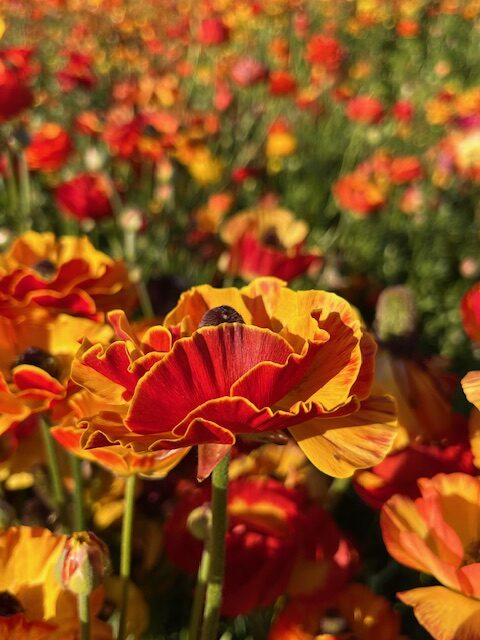
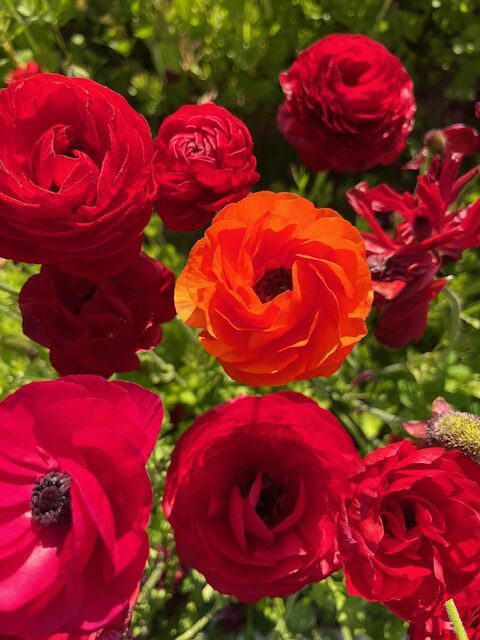
When Should You Plant Ranunculus Bulbs?
Timing is everything with these beauties! In warmer zones 8 through 10, ranunculus bulbs (technically called corms) should go in the ground in fall, usually October through early December. This gives them time to establish roots before going dormant in winter and then bursting into bloom in early spring. For those in cooler zones 4 through 7, the game plan is a little different: plant them in late winter or early spring, just after the danger of hard frost has passed. Gardeners in colder zones often start them indoors and transplant them outside once conditions warm up.
Do Ranunculus Come Back Every Year?
Great question—and the answer is sometimes. Ranunculus are considered tender perennials, which means they’ll come back year after year if they don’t freeze. In the mild climates of zones 8 through 10, they’re happy to rest underground after blooming and return the next spring. But in colder areas, they usually get treated like annuals since the corms can be damaged or killed by frost. If you’re in a chillier zone and want to give them a second life, dig up the corms after the foliage fades, let them dry, and store them in a cool, dry spot until next season. This process is called overwintering.
Should You Soak Ranunculus Bulbs Before Planting?
Yes! Soaking ranunculus corms before planting is an important step. Soak them in room-temperature water for at least four hours to help them plump up and kickstart the growing process. Soak until the corms double in size, which can take up to 12 hours. This makes it easier for the roots to develop once they’re in the soil. Just be careful not to soak them overnight, as that can lead to rot.
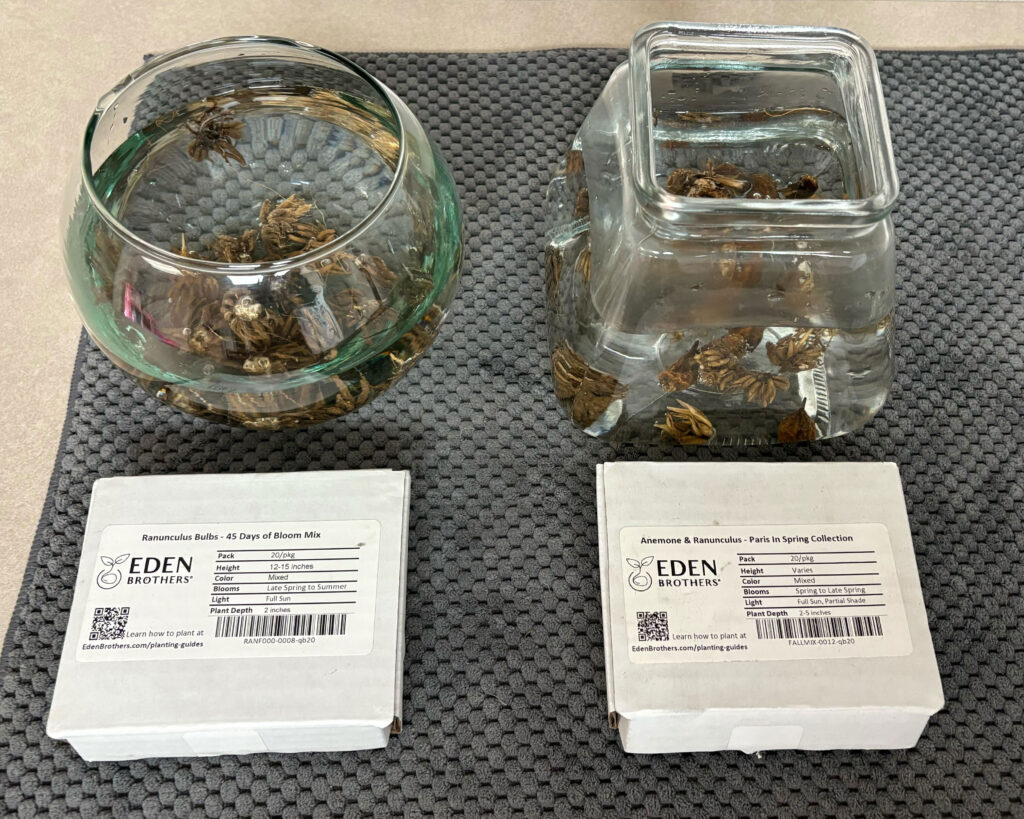
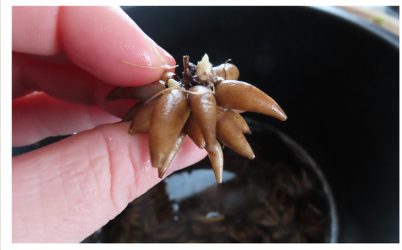
Are Ranunculus Tricky to Grow?
Ranunculus can be a little tricky because they have very specific, but not outlandish, needs. They dislike soggy soil, intense heat, and frost. They need full sun, excellent drainage, and cool but not freezing temperatures to thrive. Getting the watering just right is key—too much moisture can rot the corms, while too little can cause stunted growth. That’s why planting them in an area with good drainage is important. With proper timing, well-drained soil, and the correct location, you can absolutely grow these flowers successfully. They’re not hard so much as… particular. For more information, reference our ranunculus planting instructions here.
Do Ranunculus Bloom All Summer Long?
Sadly, no. Ranunculus are spring superstars, not summer marathoners. They usually bloom from late spring to early summer, depending on when you plant. Remember, they like their full sun location but when the weather is cool! Once the weather gets hot, they check out for the season and go dormant. But oh, those few weeks of blooms? So worth it. For the most abundant and longest bloom period, plant your corms at the right time and provide them with the cool spring temperatures they love.
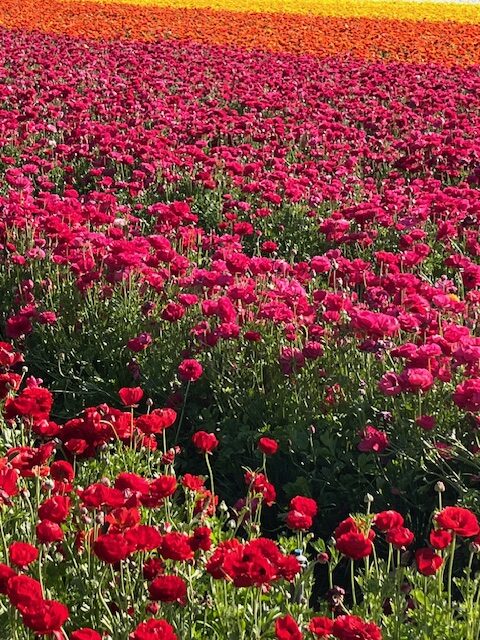
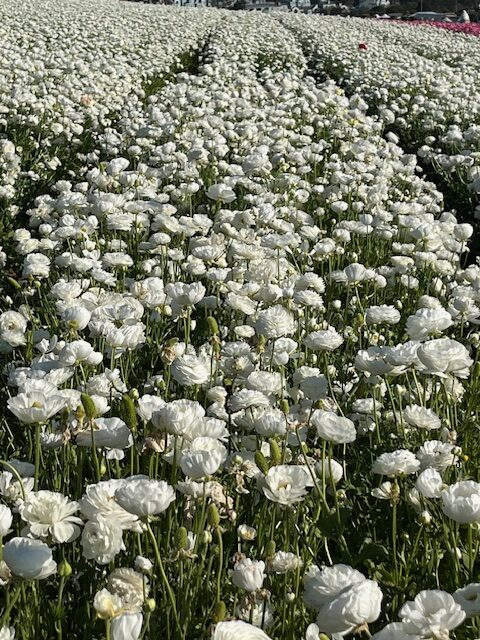

So why not indulge in a little ranunculus magic this season? We have created fun mixes like Happy Mix, Romantic Mix, and even a Lipstick Mix that bring some of the best ranunculus colors together. Or try our single varieties like Amandine Salmon that show off shades of tangerine and coral, or Purple Jean for a soothing splash of lavender! With their ruffled layers and dazzling colors, these blooms are like something straight out of a garden fairytale.
Explore Related Posts
-

Plant Flower Bulbs En Masse
The massed blooms make a bold visual impact, turning an ordinary garden bed into a spectacular floral display.
-
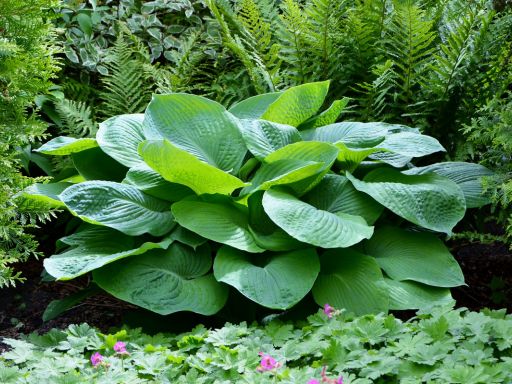
Bright Ideas for a Shade Garden
Learn some tips to turn the dull shaded area of your yard into a colorful relaxing oasis to enjoy.
-

A Tulip for Every Taste
Learn about the many different types of tulips–each with unique bloom times and features.
-
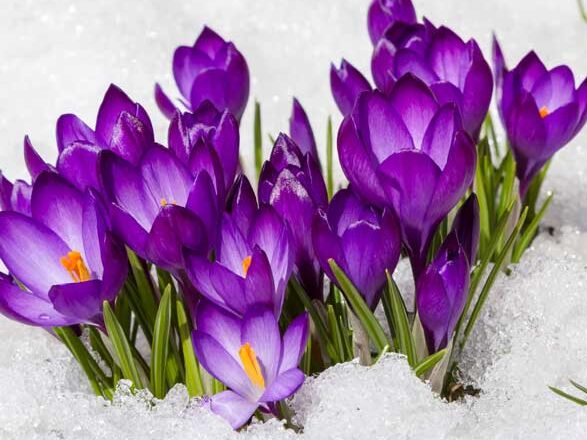
Fall Bulbs for Early Spring Blooms
Plant in fall for a stunning early spring show! Meet the underrated heroes of fall-planted flower bulbs: Crocus, Hyacinth, and Muscari.